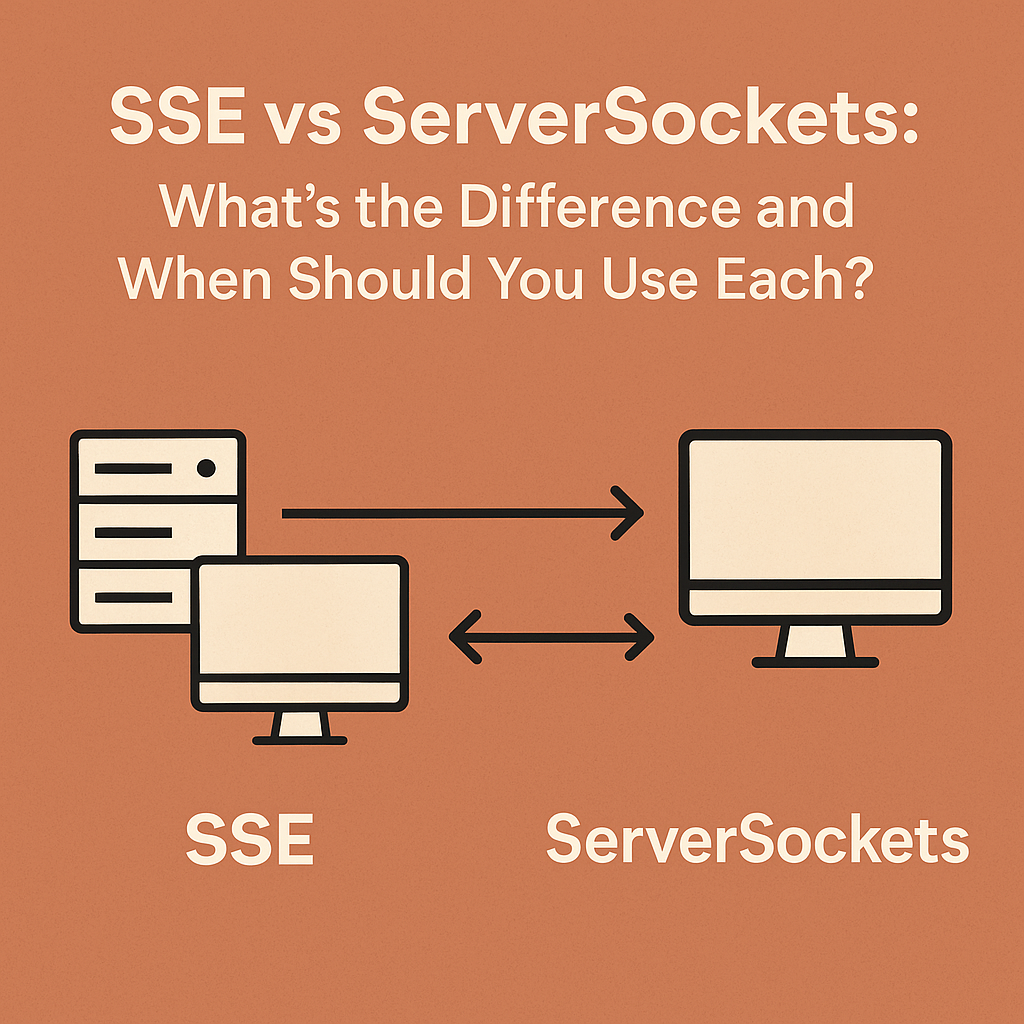
For real-time web apps, choosing between Server-Sent Events (SSE) and WebSockets can make or break your project. Both enable server-to-client communication, but they serve different purposes. Here’s a quick breakdown to help you decide.
Server-Sent Events (SSE)
SSE is a lightweight, HTTP-based protocol where the server pushes updates to the client over a single, long-lived connection. The client opens a connection, and the server sends text-based messages (usually in text/event-stream format) whenever there’s new data.
- Pros: Simple to implement, works over standard HTTP, low overhead, built-in reconnection handling.
- Cons: Unidirectional (server to client only), limited to text data, less flexible than WebSockets.
- Use Case: Perfect for scenarios where the server needs to push frequent updates, like live news feeds, stock tickers, or notifications.
WebSockets
WebSockets create a full-duplex, bidirectional connection between client and server, allowing both to send messages at any time. It’s a separate protocol (ws:// or wss://) that’s more complex but highly versatile.
- Pros: Bidirectional communication, supports binary and text data, low latency.
- Cons: More complex setup, higher server resource usage, no automatic reconnection.
- Use Case: Ideal for interactive apps like chat systems, multiplayer games, or collaborative tools where both client and server need to exchange data frequently.
When to Choose What?
- Use SSE for simple, server-driven updates where clients just need to listen (e.g., live sports scores or monitoring dashboards).
- Use WebSockets for real-time, two-way interactions (e.g., real-time messaging or gaming).
Wrapping Up
SSE is like a one-way radio broadcast—simple and effective for updates. WebSockets are like a phone call—dynamic and interactive but require more setup. Choose based on your app’s needs for directionality and complexity.
Tech Joke
Why did the SSE choose a date over ServerSocket?
Because it only wanted a one-way connection !!!
Leave a Reply